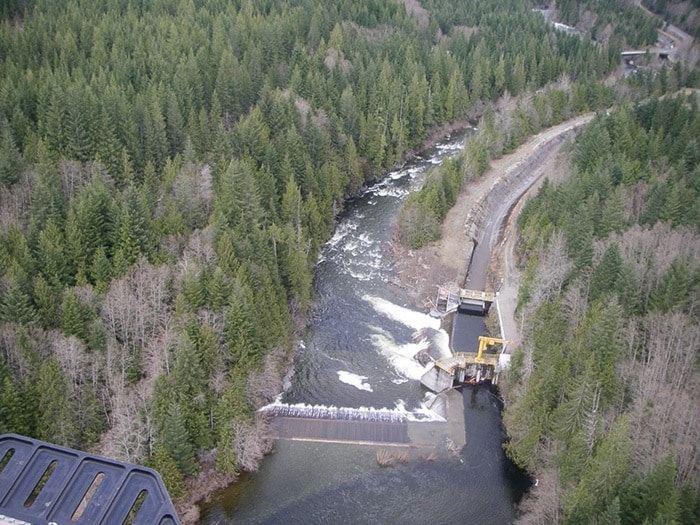Work on a remedy to a hotly-debated diversion in the Salmon River is expected to begin within the next few months.
The diversion, a three-kilometre-long concrete tunnel, or dam, built in the 1950s, has proved to be a barrier to migrating steelhead and salmon.
The Campbell River Salmon Foundation, the Sayward Fish and Game Club, Fisheries and Oceans Canada and the B.C. Ministry of Environment have been working with BC Hydro for years to explore ways to help the fish get around the dam, which was put in place to divert water from the Salmon River to the Lower Campbell reservoir for power generation.
Hydro announced last fall that it had finally come up with a concept that will involve a modified fish ladder as well as canal upgrades.
Stephen Watson, spokesperson for BC Hydro, told city council recently that work on the first phase of the project is set to begin this spring.
“Basically, this is for fish passage, to allow fish to more easily get past that facility,” Watson said, “to allow the fish to access that habitat upstream.”
In order to facilitate that movement, Watson said BC Hydro intends to install a fish ladder significantly larger than the existing one that was installed in the 1990s. Watson said as water flows through the existing fish ladder and spills over the dam and over a canal wall, the flow velocities are too high for fish to move through.
Fish advocate Mike Gage has told the Mirror in the past that it means 42 kilometres of the 82 kilometre-long Salmon River are inaccessible to all five species of salmon that use the river.
Watson said with the improvements, which will go beyond improving the fish ladder, fish will have access to that upper habitat.
“We’re also doing some debris management and also some flow control,” Watson said. “Right now when fish come up to that area there’s a whole bunch of white water and they get confused as to which way to go, so we’re going to do some modifications where at the lower flows, just water that comes downstream will come out of the fish ladder, so it will be an attraction flow and allow fish to move upstream.
“The water level just upstream of the dam will be held at a slightly higher level to provide this debris management and to improve flow control through the fish ladder.”
Watson said that portion of the project, including the modifications to the fish ladder, are expected to be completed by the fall.
Phase two of the project involves improvements downstream of the canal and consists of replacement of an existing fish screen that was built in the 1980s and is positioned horizontally and angled downward.
Watson said the screen is not ideal and pushes fish down and to the side where they enter a pipe that takes them back to the Salmon River.
He said the new fish screen will be vertical and angled downstream to “slowly push fish off to the side of the canal and into the pipe, no matter where they are in the water column.”
Watson said the new screen and other dam safety improvements are planned for 2018.
